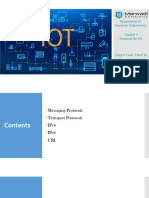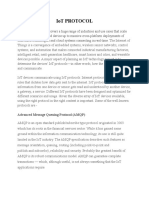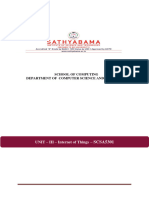0% found this document useful (0 votes)
23 views3 pagesIot Protocol XMPP
XMPP is an open, XML-based protocol originally designed for instant messaging that has found applications in the Internet of Things (IoT) due to its extensibility, real-time communication, and decentralized architecture. While it offers advantages like bidirectional messaging and built-in presence awareness, its XML verbosity and complexity can be drawbacks compared to lighter protocols like MQTT. XMPP remains a viable option for IoT applications requiring richer data exchange and integration with existing systems despite its limitations.
Uploaded by
dsandhiya186Copyright
© © All Rights Reserved
We take content rights seriously. If you suspect this is your content, claim it here.
Available Formats
Download as PDF, TXT or read online on Scribd
0% found this document useful (0 votes)
23 views3 pagesIot Protocol XMPP
XMPP is an open, XML-based protocol originally designed for instant messaging that has found applications in the Internet of Things (IoT) due to its extensibility, real-time communication, and decentralized architecture. While it offers advantages like bidirectional messaging and built-in presence awareness, its XML verbosity and complexity can be drawbacks compared to lighter protocols like MQTT. XMPP remains a viable option for IoT applications requiring richer data exchange and integration with existing systems despite its limitations.
Uploaded by
dsandhiya186Copyright
© © All Rights Reserved
We take content rights seriously. If you suspect this is your content, claim it here.
Available Formats
Download as PDF, TXT or read online on Scribd
/ 3























































































